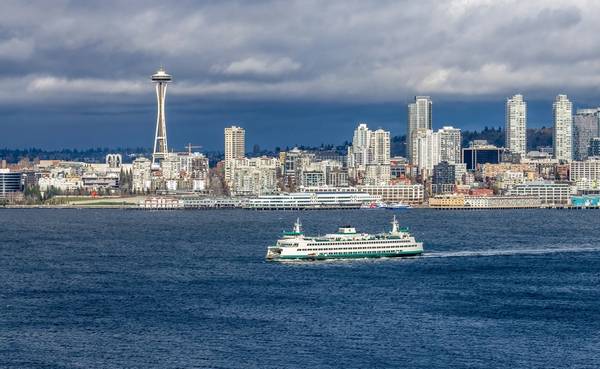
Cutting-edge solutions to an unprecedented increase in human and technological challenges will be unveiled when global trade association Interferry stages its 46th annual conference in Seattle this October on the theme of ‘Power and People’.
As Interferry CEO Mike Corrigan explains, "In a fast-changing operational and environmental climate, the ferry industry’s long-term success depends more than ever on two main factors. We need to attract dedicated people who are interested in pursuing a rewarding maritime career and help them achieve the qualifications required by our industry. Meanwhile we must drive support for the technologies and facilities that are crucial to reducing greenhouse gas emissions."
Daunting maritime GHG regulations require interim cuts of some 50% by 2030 and ‘net zero’ status by 2050. Towards these targets, the ferry sector is pioneering the transition to fully electric or hybrid power systems, but stresses this has to be complemented by major expansion of the shoreside electricity grid – because existing capacity is largely limited to ‘cold ironing’ consumption at berth and may not enable batteries to be sufficiently recharged for propulsion.
In May, Interferry launched worldwide lobbying of governments and port bodies to urge investment in Onshore Power Supply (OPS) infrastructure. A joint program to promote the provision and use of OPS was agreed with the European Sea Ports Organization (ESPO), and backing from other like-minded partners is set to follow.
Interest in a joint statement of intent has already been indicated by Cruise Lines International Association president and CEO Kelly Craighead, who will be a keynote speaker at the conference. Her take on the ‘parallel universes’ of the cruise and ferry sectors will explore how strategic partnerships can amplify the maritime industry’s voice in the face of labor uncertainty and achieving zero emissions.
Corrigan, who is based in the Pacific northwest of North America, notes, “While the path towards zero emissions is beginning to reveal itself more clearly, many major operators are struggling to crew their vessels due to a skilled labor shortage. At a regional level, we are beginning to see cancellations of sailings by BC Ferries and Washington State Ferries because they cannot meet the crew numbers required by their respective transportation authorities.
“The urgency of this worldwide ferry industry challenge compelled us to offer conference delegates tangible solutions that will engage and train the next generation of mariners and utilize automation to complement their skills while also reducing the strain on labor demand.”
Day 1 of the speakers program focuses on the People component, with an opening keynote speech by Tremain Holloway, principal of Seattle’s Highline Maritime High School. He will describe a unique new venture giving young people early exposure to maritime career opportunities through a project-based learning syllabus specifically levelled at students of high school age.
Other sessions will include:
Power topics take center stage on Day 2 with sessions including:
Both days of the conference will end with audience-engaging panel discussions. The first features industry leaders – including Wartsila president and CEO Hakan Agnevall and P&O Ferries CEO Peter Hebblethwaite – debating the fundamental Power and People issues. In the concluding panel, key innovators will review the transformational change offered by emerging technologies, including the shift to high-speed but zero emissions ferries.
The two-day speakers program takes place on October 3-4 at the Bell Harbor International Conference Center on Seattle’s waterfront. Co-hosted by operators Washington State Ferries and FRS Clipper, the full event runs from October 1-5 with a comprehensive networking and social agenda including a reception at the Museum of Flight – one of the largest air and space collections in the US – and dinner at the Kiana Lodge showcase for Pacific North West indigenous cuisine and culture.



